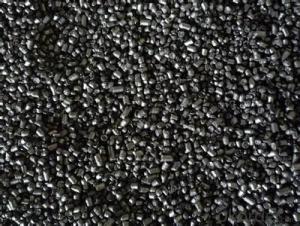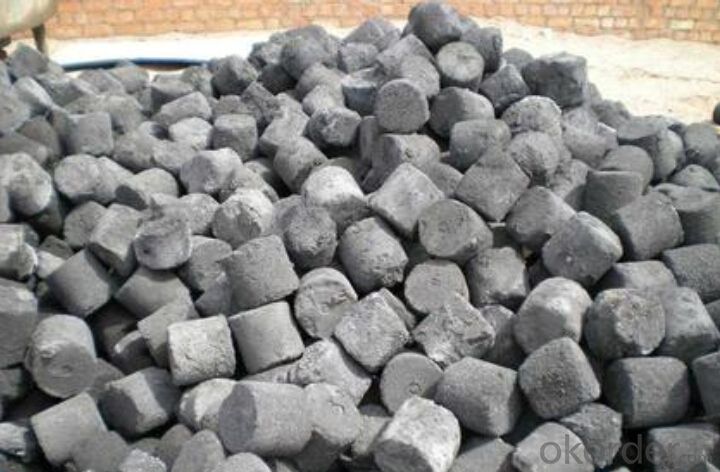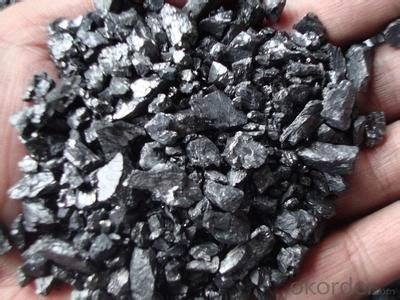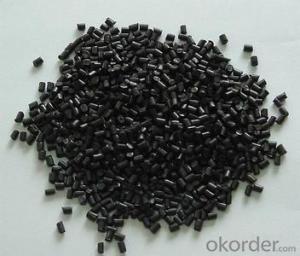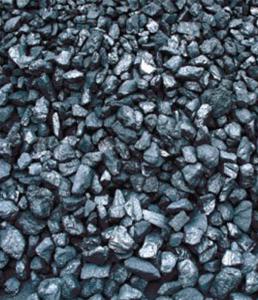Carburant for grey iron casting and steel casting
- Loading Port:
- Qingdao
- Payment Terms:
- TT OR LC
- Min Order Qty:
- 10 m.t.
- Supply Capability:
- 50000 m.t./month
OKorder Service Pledge
OKorder Financial Service
You Might Also Like
Specifications of Carburant:
- Size: 0-1mm, 0.5-1.5mm, 1-3mm, 0-5mm, 1-5mm, 3-5mm, 3-8mm
- Application: grey iron casting and steel casting
Carburant for grey iron casting and steel casting:
- Carburant: this product is exclusively used in grey iron casting and steel casting.
- Features: Pure chemical composition; high carbon, low sulfur and micro nitrogen, less impurity.
- Physique: Clean appearance without impurities, fast absorption rate and high absorptivity.
- Micro morphology: good crystal quality and improve the performance and specification of casting
- Stable property: stable carburetion effect, good absorption effect and Increase melt temperature distinctly without back slag.
Data Sheet:
Type | Fixed Carbon | Sulfur | Moisture | Volatile | Graininess |
≥ | ≤ | ≤ | ≤ | 90% | |
Carb-98 | 98.50% | 0.50-0.03% | 0.50% | 0.50% | Custom |
Carb-93 | 93.00% | 0.50-0.30% | 0.50% | 0.50% | Custom |
Carb-88 | 88.00% | 0.80-1.50% | 3.50% | 1.50% | Custom |
Carb-92 | 92.00% | 0.50-0.38% | 0.50% | 3.00% | Custom |
Size and packing:
- Size:
Grade A: 0-1mm,0.5-1.5mm etc.
Grade B: 1-3mm,0-5mm,1-5mm,3-5mm,3-8mm etc.
- Applications
Due to different melting technology and equipment, grade A is applicable to iron liquid carburetion with flow before the furnace and later supplementary carbon in the furnace. grade B is applicable to carburant in the Induction Furnace .grade c is only applicable to converter steelmaking.
- The grain size can be made according to the requirement of the customers.
- packaging
25kg/bag Waterproof woven bag
25kg/bag double paper bags
50kg/bag woven bag
1000kg/bag ton bag
If you have special instruction please contact with us.
Storage:
Please keep the storage clean and dry, prevent moisture and dirty.
Quality guarantee and technical support
- Provide the quality certificate with the goods including: company name, address, product name, date of manufacture type and model, result of test.
- Ensure to offer on-site technical service and support.
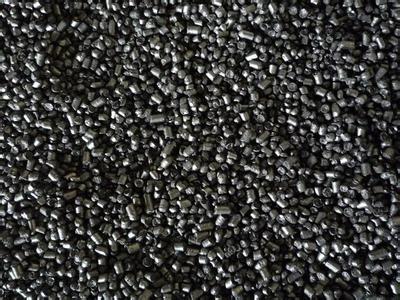
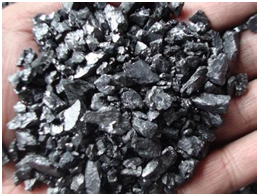
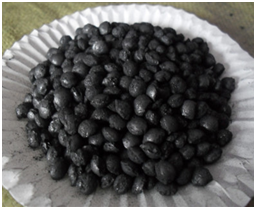
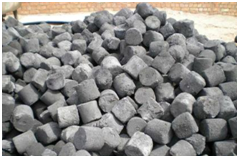
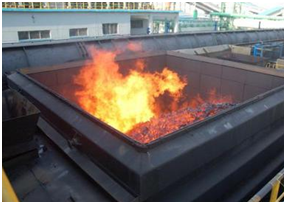
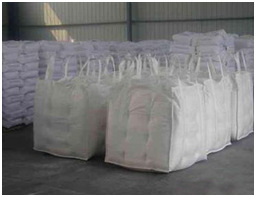
- Q: How does carbon dating work?
- Carbon dating is a scientific technique used to determine the age of organic materials, such as plants, animals, and human remains. It relies on the fact that carbon-14, a radioactive isotope of carbon, is constantly formed in the atmosphere by cosmic rays. While carbon-14 is present in the atmosphere, it is also absorbed by living organisms through photosynthesis or consumption of other organisms. The ratio of carbon-14 to stable carbon isotopes (carbon-12 and carbon-13) in the atmosphere remains relatively constant, as living organisms maintain a constant level of carbon-14 by exchanging it with the atmosphere through respiration or consumption. However, when an organism dies, it no longer takes in carbon-14, and the existing carbon-14 begins to decay at a predictable rate. Carbon-14 has a half-life of approximately 5,730 years, meaning that after this time, half of the carbon-14 in a sample will have decayed into nitrogen-14. By measuring the remaining carbon-14 in a sample, scientists can calculate how long it has been since the organism died. The process of carbon dating involves several steps. First, a sample is collected from the organic material to be dated, which can be anything from wood to bones to textiles. The sample is then prepared for analysis by removing any contaminants and converting it into a form suitable for measurement. Next, the sample is exposed to a high-energy radiation source, such as a particle accelerator or a nuclear reactor, which causes the carbon atoms in the sample to release small bursts of energy known as beta particles. These particles are detected and measured by sensitive instruments, allowing scientists to determine the amount of carbon-14 remaining in the sample. Finally, this information is used to calculate the age of the organic material. By comparing the ratio of carbon-14 to carbon-12 in the sample to the known ratio in the atmosphere, scientists can estimate the time elapsed since the organism died. Carbon dating is an invaluable tool for archaeologists, paleontologists, and geologists, as it allows them to accurately determine the ages of ancient artifacts, fossils, and geological formations. It has revolutionized our understanding of human history and the natural world, providing us with invaluable insights into the past.
- Q: What is carbon neutral shipping?
- Carbon neutral shipping refers to the concept of offsetting or balancing out the carbon emissions produced during the transportation of goods by sea, air, or land. It aims to minimize the negative impact of shipping on the environment and climate change. Shipping contributes to greenhouse gas emissions through the burning of fossil fuels, primarily through the use of heavy fuel oil in ships' engines. This results in the release of carbon dioxide (CO2), nitrogen oxides (NOx), sulfur oxides (SOx), and particulate matter into the atmosphere, contributing to global warming and air pollution. To achieve carbon neutrality in shipping, various strategies can be employed. One of the most common approaches is the use of carbon offsetting. This involves investing in projects that reduce or remove an equivalent amount of CO2 from the atmosphere, such as reforestation, renewable energy projects, or methane capture initiatives. By supporting these projects, the carbon emissions from shipping are balanced out, resulting in a net-zero carbon footprint. Another method to achieve carbon neutrality is through the use of alternative fuels and energy-efficient technologies. For instance, biofuels, hydrogen, and electric propulsion systems can significantly reduce or eliminate carbon emissions from ships during their operation. Additionally, optimizing shipping routes and vessel design can also contribute to reducing fuel consumption and emissions. Furthermore, collaboration between shipping companies, governments, and international organizations is essential to promote carbon neutral shipping. This includes setting industry-wide emission reduction targets, implementing stricter regulations, and providing incentives for sustainable practices. While carbon neutral shipping is a positive step towards mitigating climate change, it is important to acknowledge that it should be seen as a transitional measure towards achieving a fully decarbonized shipping sector. Continued research and development in clean technologies, along with the adoption of sustainable practices, are crucial to achieving long-term environmental sustainability in the shipping industry.
- Q: What is the chemical symbol for carbon?
- The chemical symbol for carbon is C.
- Q: How do plants use carbon dioxide?
- Plants use carbon dioxide through a process called photosynthesis, which is vital for their survival. During photosynthesis, plants take in carbon dioxide from the air through small openings on their leaves called stomata. Inside the leaves, carbon dioxide combines with water, which is absorbed by the roots, to produce glucose and oxygen. The glucose is used by the plant as a source of energy to carry out various metabolic processes and to grow. Additionally, plants store excess glucose in the form of starch for future use. The oxygen produced during photosynthesis is released back into the atmosphere, which is crucial for the survival of other living organisms, including humans, as we depend on oxygen for respiration. Therefore, plants play a crucial role in maintaining the balance of carbon dioxide and oxygen in the atmosphere, making them essential for life on Earth.
- Q: A carbon Roast Lamb Leg stores need to how much money
- Do about 50 thousand! Do not have their own skills, you have to learn, have time to look at the Weifang green, Mongolia edge, taste and scale are pretty good!
- Q: How does carbon impact the formation and intensity of hurricanes?
- Carbon dioxide (CO2) and other greenhouse gases contribute to the warming of the Earth's atmosphere, leading to global climate change. This increased warming affects the formation and intensity of hurricanes. Warmer ocean temperatures provide more energy for hurricanes to form and strengthen, making them more intense. Additionally, higher levels of atmospheric moisture due to increased evaporation from warmer oceans also contribute to the formation and intensity of hurricanes. Therefore, carbon emissions play a significant role in the impact of hurricanes by fueling their formation and increasing their destructive potential.
- Q: How is carbon used in the steel industry?
- Carbon is a crucial element in the steel industry as it plays a vital role in the production of steel. The addition of carbon to iron is the fundamental process that transforms iron into steel. By combining iron with a controlled amount of carbon, the steel industry is able to achieve the desired properties such as hardness, strength, and durability. Carbon is primarily used as an alloying element in steelmaking, where it enhances the mechanical properties of steel. The carbon content in steel can vary from as low as 0.1% to as high as 2%, depending on the desired steel grade and application. Low carbon steel, with a carbon content of less than 0.3%, is commonly used for applications that require good formability and weldability, such as automotive bodies and construction materials. On the other hand, high carbon steel, with a carbon content of above 0.6%, is used for applications that require high strength and hardness, such as cutting tools, drill bits, and springs. The presence of carbon in these applications allows for increased wear resistance and improved mechanical properties. Carbon also plays a crucial role in the heat treatment process of steel. Through a process called carburizing, steel can be heated in the presence of carbon-rich gases or solids to increase the carbon content at the surface. This results in a hardened surface layer with improved wear resistance, while maintaining a tough and ductile core. Furthermore, carbon is essential for the steel industry's use of electric arc furnaces (EAFs) in steelmaking. EAFs utilize electricity to melt scrap steel and other raw materials. During this process, carbon is introduced to reduce the oxides present in the raw materials, allowing for efficient steel production. In summary, carbon is widely used in the steel industry to achieve the desired properties of steel such as hardness, strength, and durability. Its addition during the steelmaking process and through heat treatment enhances the mechanical properties of steel, allowing for a wide range of applications in various industries.
- Q: How does carbon impact the stability of tundra ecosystems?
- Carbon impacts the stability of tundra ecosystems in several ways. Firstly, carbon plays a crucial role in the formation and development of tundra soils. As plants in the tundra grow and photosynthesize, they absorb carbon dioxide from the atmosphere and convert it into organic matter through photosynthesis. This organic matter eventually decomposes and adds carbon to the soil, forming a layer of organic-rich permafrost that helps stabilize the ecosystem. Additionally, carbon in the form of vegetation acts as a protective layer against erosion in tundra ecosystems. The dense vegetation cover, composed of mosses, lichens, and shrubs, helps to hold the soil in place and prevents it from being washed away by wind or water. This stabilization is essential in the tundra, where the cold temperatures and short growing seasons limit plant growth and soil development. Furthermore, the stability of tundra ecosystems is influenced by the release of carbon dioxide and methane, which are greenhouse gases, from the melting permafrost. As global temperatures rise, the permafrost thaws, releasing stored carbon into the atmosphere. This process creates a positive feedback loop, as the released carbon contributes to further warming, which in turn accelerates permafrost thawing. This feedback loop has the potential to destabilize tundra ecosystems by altering the balance of plant and animal life, disrupting nutrient cycling, and increasing the risk of wildfires. Overall, carbon plays a vital role in maintaining the stability of tundra ecosystems through the formation of soils, erosion control, and the regulation of greenhouse gas emissions. Understanding and managing carbon dynamics in the tundra is crucial for preserving these unique and fragile ecosystems in the face of climate change.
- Q: What are the effects of carbon emissions on freshwater systems?
- Carbon emissions have significant effects on freshwater systems. Increased carbon dioxide levels in the atmosphere lead to a rise in global temperatures, which in turn affects freshwater ecosystems. Warmer water temperatures can disrupt the delicate balance of aquatic life, leading to the decline of certain species, including fish and other organisms that depend on specific temperature ranges. Additionally, carbon emissions contribute to ocean acidification, which ultimately affects freshwater systems through interconnected hydrological cycles. Acidic waters can harm freshwater organisms, deplete their food sources, and disrupt the overall health of these ecosystems. Overall, carbon emissions have a detrimental impact on freshwater systems, threatening their biodiversity and ecological stability.
- Q: What is the importance of carbon dating in archaeology?
- Archaeology heavily relies on carbon dating, which plays a pivotal role in determining the age of artifacts and archaeological sites. This scientific technique is essential for establishing a chronological framework and comprehending the timeline of human history. Carbon dating operates on the principle that all living organisms contain a specific amount of radioactive carbon-14, which undergoes predictable decay over time. By quantifying the remaining carbon-14 in an artifact or organic material, archaeologists can calculate its age. This method is particularly advantageous when dating organic remains like bones, charcoal, and plant fibers, which are frequently unearthed at archaeological sites. The significance of carbon dating lies in its ability to deliver precise and trustworthy estimations of an artifact's age. This information is critical for interpreting and comprehending the context and importance of archaeological discoveries. By assigning an accurate date to an object or site, archaeologists can establish connections between different artifacts, societies, and cultures. This, in turn, aids in reconstructing ancient civilizations and their evolution throughout time. Moreover, carbon dating also contributes to refining and validating historical timelines. It enables archaeologists to cross-reference and authenticate the dating of artifacts and sites by employing alternative dating methods, such as dendrochronology (tree-ring dating) or stratigraphy (the study of rock layers). Employing multiple dating techniques enhances the accuracy and reliability of archaeological interpretations. Carbon dating also assists in identifying and distinguishing genuine artifacts from forgeries. By analyzing the age of an object, archaeologists can determine if it aligns with the claimed historical context. This is especially pertinent in the realm of art and antiquities, where the market for counterfeits can be lucrative. In conclusion, carbon dating is an indispensable tool in archaeology, enabling researchers to establish the chronology of ancient civilizations, validate historical timelines, and identify authentic artifacts. It provides invaluable insights into our past, facilitating a deeper understanding and appreciation of the diverse tapestry of human history.
Send your message to us
Carburant for grey iron casting and steel casting
- Loading Port:
- Qingdao
- Payment Terms:
- TT OR LC
- Min Order Qty:
- 10 m.t.
- Supply Capability:
- 50000 m.t./month
OKorder Service Pledge
OKorder Financial Service
Similar products
Hot products
Hot Searches
Related keywords
